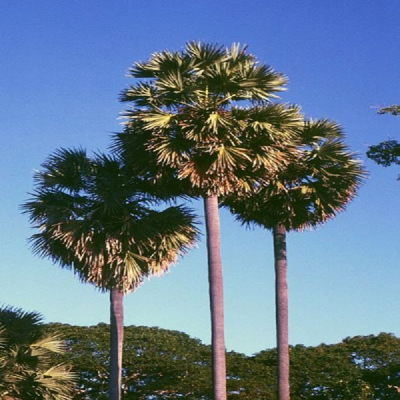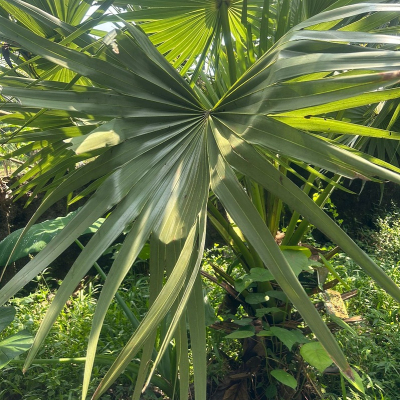Distribution and habitat: Found all over India, Ceylon and Burma, wild as well as cultivated
- Botany: Trunk attains 30 m in height and 60-90 cm diameter; black swollen above the middle and again contracted upwards, old stems marked with the black narrow scars of the petioles.
- Leaves: 0.9 to 1.5 m in diameter, palmately fan shaped, rigidly coriaceous, cleft in to many lobes , petiole edges with hard horny spinescent serratures.
- Flowers: Unisexual, male spadix branched, female spadix simple.
- Fruits: Large, subglobose drupes, on the greatly enlarged perianth.
Properties:
- The fruit is sweet, cooling; intoxicating, fattening, aphrodisiac, tonic, laxative, useful in burning sensations, thirst, fatigue, blood complaints.
- The seed is diuretic and laxative.
- The fermented juice is tonic, fattening, aphrodisiac, intoxicating, expectorant; when freshly drawn it is useful in inflammatory affections and dropsy; slightly fermented it is used in diabetes. It is also diuretic and prescribed in chronic gonorrhoea.
- The root is considered diuretic and anthelmintic and is employed as cure for gonorrhoea
Uses
- Roots: Young roots are diuretic and anthelmintic and a decoction is given in certain respiratory diseases
- Bark or Stem: The bark decoction, with salt, is used as a mouth wash, and charcoal made of the bark serves as a dentifrice.
- Fruit: Palm fruit has anti-inflammatory and antioxidant properties.
- Flower: Sap from the flower of the matured tree stalk is prized as a tonic, diuretic agents, stimulant, laxative and anti-phlegmatic
- Sap and Toddy: It is obtained by tapping the top shoots and collecting the dripping juice in hanging earthen pots tied with the trees. The juice early morning is refreshing and is light. The drink has high nutrient value and is good for health



